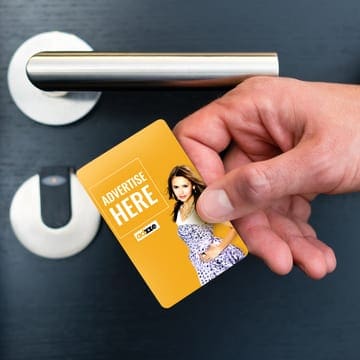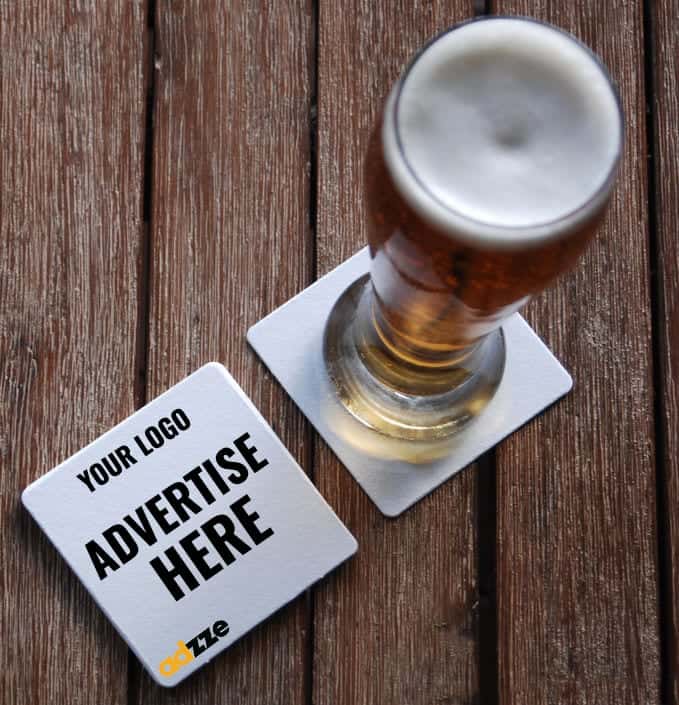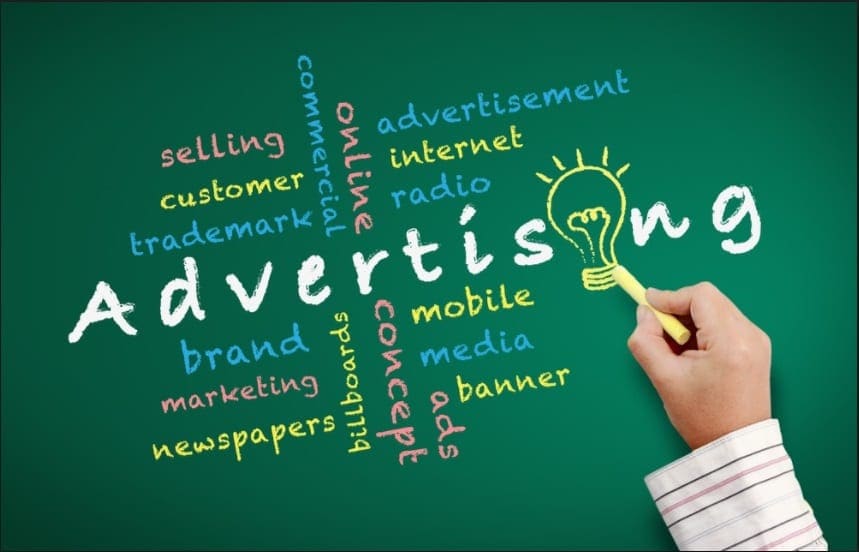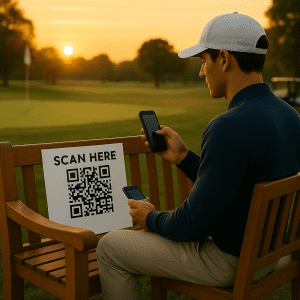Ambient Marketing is a relatively new concept that many agencies have been adopting to attract the attention of the target audience.
Ambient marketing is an innovative approach that places advertisements in unexpected and unconventional locations, capturing consumer attention in ways traditional methods cannot. By integrating technology like augmented reality (AR) with ambient ads on platforms such as coffee cups, bar coasters, and pizza boxes, brands can create interactive and memorable experiences. This strategy not only engages consumers but also offers valuable tracking data, helping marketers measure campaign performance and improve ROI. Discover how ambient marketing concepts are transforming the way brands reach their target audiences.
Ambient Marketing: what is that?
Ambient Marketing is defined by placing the ad at unusual places or unconventional places where people would not expect to see an ad. This is a concept that became a niche for advertising agencies to overcome traditional methods of advertising to attract the attention of consumers (1).
The Relevance of Ambient Marketing
The need of a more appealing advertising tactic was triggered by the decline in the power of traditional media. Nowadays there is greater demand for point-of-sale communications and the need to precise audience targeting (2). Most of the traditional media compete in crowded categories generating a decrease in the perception and assimilation of the advertising message. The placement of ads at unusual places makes a surprising effect on the target audience enabling the receiver to improve the perception and assimilation of the message (2). One sub-segment of Ambient Advertising is In-the-Hand Advertising. This concept relies on placing ads on consumables that the target audience cannot ignore as they have to take them into their own hands. Such consumables can be drink coasters, pizza boxes, coffee cups, door hangers, pharmacy bags. This is also often referred to as guerrilla tactics.
Let’s bounce some ideas.
Ambient Marketing ideas:
1. Hotel Key Cards

Travelers are an affluent audience. Hotel guests are high-spend consumers as they are constantly looking for new shopping, food, and tourism experiences. The guests receive the hotel key cards with ads on it with promotions and discounts from the best restaurants and tourist events. The advertisement cannot be ignored, hotel guests must take the keys (and the Ad) in their hands. Each hotel guest views the ad 6-8 times per day. The average hotel will have 115 rooms and 65% average occupancy rate and 3 night stay. This delivers a total reach of 970 guests per hotel and 0.1M impressions per month.
3. Pharmacy Bags

The advertisement is printed on pharmacy prescription bags and distributed to the stores the advertiser selected. The consumer literally touches the ad and eventually brings it to their home. Pharmacy Bag Advertising creates additional exposure to other viewers since sometimes the consumers place the bags on their tables at home. Pharmacy Bag Advertising is an outstanding tactic to reach consumers with their minds in healthcare.
3. Drink Coasters

The venue places the coasters on the dining or bar tables generating a direct impact on consumer who receives the message in their hands. This enabled a guaranteed impression as they had to take the coaster in their hands. Approximately 1,500 coasters/per month are distributed by each venue generating an estimated 0.7M of impressions. Each drink coaster can be viewed by on average 4-6 other people in a relaxing environment enabling the audience to better assimilate the message.
Technology Integration with Ambient Ads
Augmented reality (AR) can be seamlessly integrated into ambient advertising to monitor consumer engagement. We can draw inspiration from innovative advertising methods like bar coasters, pizza box ads, coffee cup ads, and even cartvertising (advertising on shopping carts). These formats offer a unique opportunity to merge the physical and digital worlds through AR, creating interactive experiences that can be tracked for engagement. Here’s how AR can elevate these platforms:
Bar Coasters with AR
Bar coaster ads are already highly engaging because they place ads directly in front of consumers in relaxed settings. Adding AR to these ads can take them to the next level. For instance, when a consumer scans a bar coaster with their phone, it could trigger a virtual game, interactive content, or a special offer. By tracking how many users scan the coasters and interact with the AR content, brands can gather valuable data on real-time engagement and consumer interaction, providing insights into the effectiveness of the campaign.
Snack Manufacturer: AR-Enabled Bar Coasters
A snack manufacturer could enhance bar coasters with AR to create a fun, interactive experience for bar-goers. When customers scan the coaster with their smartphones, they could unlock an AR mini-game featuring the brand’s snack products. For example, players could “catch” virtual chips falling into a digital bag, with rewards such as discount codes or free samples for achieving high scores. This not only entertains but also encourages continued engagement and repeat snack purchases.
Tracking user engagement, time spent playing, and the redemption of discounts can provide important metrics for evaluating the campaign’s success. Features that encourage social sharing could also increase the campaign’s reach by prompting users to share their results on social media.
Pizza Box Advertising with AR
Pizza box ads are an excellent way to reach a broad, relaxed audience, often while they are at home. Imagine incorporating an AR feature into these ads where customers can scan the pizza box and immediately access a virtual unboxing experience or an engaging 3D animation promoting a new product. This captivates users and provides valuable tracking metrics to measure how often the AR feature is utilized. Gamification elements, such as unlocking discount codes based on interaction time or user engagement, could be added to further enhance the experience.
For universities aiming to attract tech-savvy students, AR-enabled pizza boxes could be a unique way to showcase campus life. When students and their families scan the pizza box, they could be taken on a virtual campus tour with 3D views of lecture halls, dormitories, and recreational spaces. AR could also feature student testimonials or faculty introductions, providing a personalized touch.
Tracking how many users interact with the tour and collecting leads through an embedded form in the AR experience would allow the university to measure engagement and follow up with interested students. This combines convenience with innovation, appealing to prospective students who expect modern, tech-driven communication.
Coffee Cup Ads Enhanced by AR
Coffee cup advertising offers another intimate environment where AR can thrive. By scanning a coffee cup with a mobile device, consumers could be immersed in an interactive AR experience—such as a brand story or a virtual coffee tasting. The data collected from these AR interactions allows advertisers to track how many users engage with the experience, how long they interact, and what actions they take afterward, like sharing on social media or visiting a website. This opens up new avenues for branding and customer engagement.
Recruitment Company: Coffee Cup AR Ads
A recruitment company looking to engage young professionals might collaborate with local coffee shops to create AR-enabled coffee cup ads. Customers could scan the cup with their phones to access a virtual job fair during their coffee break. The AR experience could showcase job listings, company videos, and even quizzes that match them with potential employers based on their skills and preferences.
This method enables the tracking of key metrics such as user interactions, job views, and applications submitted through the AR experience. It’s a creative way to grab attention during a routine coffee break, delivering value to job seekers while promoting the recruitment company.
Pharmacy Bag AR Ads to Promote Health Products
An insurance company promoting health plans could use AR technology through pharmacy bags. When patients scan the bag, they can receive personalized health tips related to their prescriptions, along with details about insurance plans that cover preventive care.
Using AR, the company can directly engage consumers in their health journey, offering valuable content while promoting insurance options. Key performance indicators (KPIs) like scan rates, time spent engaging with health tips, and inquiries into insurance plans provide insights into the campaign’s effectiveness and consumer behavior.
Ambient Marketing is one of the most effective ways to promote your business. With Ambient Marketing, you can easily reach millions of people without spending a dime. Get started today!
Source:
1. Adam Rudzewicz, AMBIENT ADVERTISING OF GLOBAL BRANDS. Conference: Business management- practice and theory in the 21 st century






